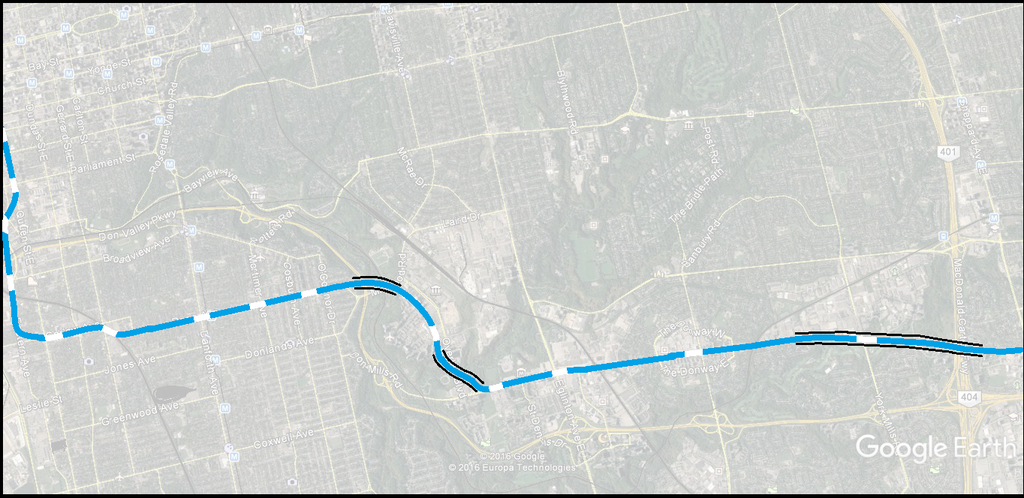To put this into an illustration for the forumers, I present this:

Elevation (skybridge) would exist in the following points:
(1): jetting out of Minton Place north of Pape Ave into the Don Valley but at a lower height than the Millwood Bridge to permit crossing underneath and reentering a tunnel between Milepost and Overlea Blvd (the pathway opposite St Edith Stein Catholic Church). This would allow for the Thorncliffe Park Stn to be located in the back lot of the East York Town Centre with the main entrance affronting Thorncliffe East and Overlea.
(2) jetting out of a second portal from the parking lot of the ITechnica Inc building, the subway crosses on a bridge underneath the Overlea bridge, past Valley Park Middle School then reemerges into a tunnel by the hydro corridor for the next station, Flemingdon Park, at Don Mills and Gateway Blvd (north leg).
(3) after crossing the Bala Sub below grade, emerges out of a portal north of Bond Ave for a massive 2 kilometre stretch of skybridge, including a station at York Mills Rd. Remains elevated over the 401 on its own separate bridge before descending into a portal by Parkways Forest Dr for the final stretch to the existing Don Mills Stn.
Thoughts or suggestions would be appreciated.


